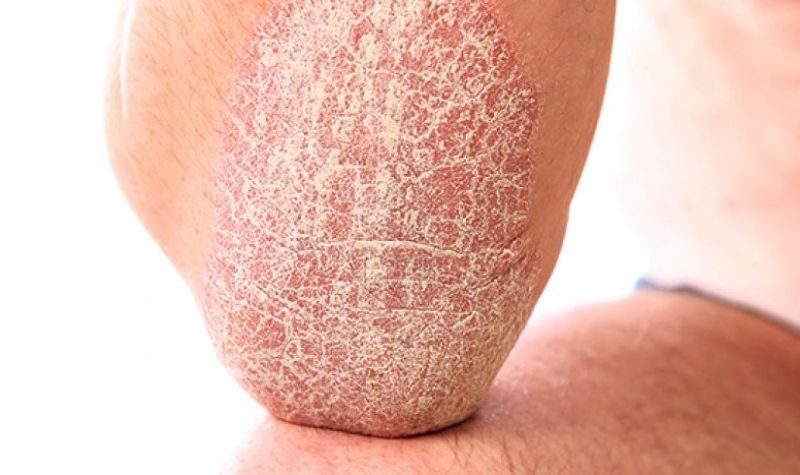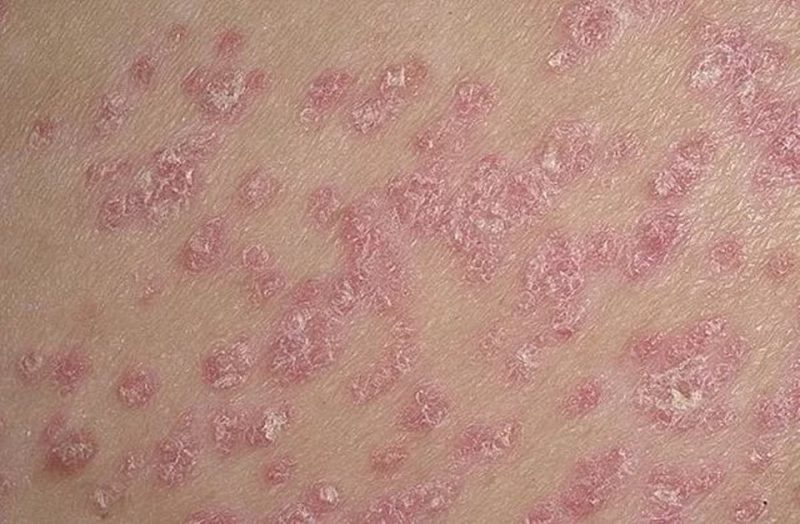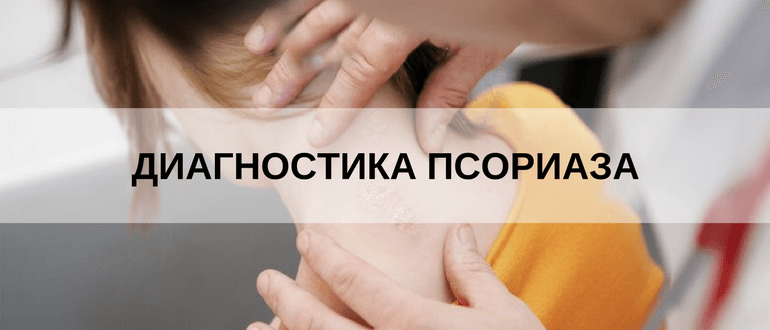Psoriasis is a chronic skin pathology that can deliver a lot of inconvenience to a patient with such a diagnosis. It is sometimes necessary to eliminate its symptoms for several years. Therefore, it is important to try to prevent the development of such an unpleasant ailment.
Material Content:
What is psoriasis and its causes
The main distinguishing feature of psoriasis (scaly lichen) is flaky whitish spots on the skin. But sometimes they can be visually invisible. Then psoriatic plaques are localized in places exposed to frequent interaction with clothes or skin of other parts of the body (buttocks, elbows, palms, knees).
In rare cases, spots form on the scalp or genitals of the person. Sometimes psoriasis can be observed in the nails. As a rule, such a lesion occurs in isolation, without capturing neighboring areas of the skin.
Psoriasis is characterized by a wave-like course (remission is replaced by relapse).
The disease, as a rule, manifests itself up to 25 years. Deterioration of the patient's condition may be due to unfavorable factors, including stress and alcohol consumption. The exact causes of the development of the disease have not yet been identified.
Possible factors for the appearance of pathology include:
- disturbances in the endocrine system;
- decreased immunity;
- genetic predisposition;
- constant stress on the nervous system;
- problems with metabolism, vitamins and minerals (especially silicon);
- the presence of parasites in the intestines (these include roundworms, giardia, whipworm, bovine and pork tapeworms);
- viral infections.
If the disease progresses, the rash covers large areas of the skin, appearing on new parts of the body.
Stages of the development of the disease
Psoriasis, like many chronic diseases, develops in stages. Determining the phase of the pathology allows the doctor to assess the course of the disease and take measures to eliminate it.
 There are three stages of psoriasis:
There are three stages of psoriasis:
- Progressive.
- Stationary.
- Regressive.
The progressive stage of the disease can be observed in the acute phase. The following symptoms are characteristic of it:
- the appearance of new nodular rashes (papules) in areas typical of their formation;
- fusion of papules into whitish plaques;
- the formation of scales on the surface of neoplasms;
- lack of peeling at the edges of plaques;
- Kebner phenomenon, in which any damage to the skin turns into new spots.
The stationary stage is considered as the first sign of the effectiveness of the treatment. With her, the following occurs:
- inflammation on the skin becomes less;
- new papules cease to appear;
- scales cover the entire psoriatic plaque;
- redness along the contour of scaly formations disappears;
- the Kebner phenomenon disappears.
Regressive stage means the end of an exacerbation of the disease. For the doctor and patient during this period, it is important to prevent repeated deterioration of the skin.
The main symptoms of the regressive stage are:
- Voronov's pseudoatrophic rim - small folds around psoriatic formations;
- the disappearance of peeling;
- the transition of plaques into whitish or dark hypopigmented spots.
The stages of the course of the disease can be determined by the severity of redness of the skin. The larger it is, the more active the development phase of psoriasis.
Is psoriasis contagious
It is impossible to catch a skin ailment in contact with the patient’s skin or his personal hygiene items. This is explained by the fact that the causes of psoriasis are in no way associated with touching the skin, they are more global and are more likely related to the nervous and endocrine systems of the human body.
It is also impossible intrauterine infection (by transmitting the disease from mother to fetus) or through sexual contact with the patient.
Symptoms and signs
In each patient, psoriasis can be expressed by different symptoms. This set of signs depends on the type and stage of the disease.
 The most common symptoms of psoriasis include:
The most common symptoms of psoriasis include:
- Psoriatic plaque-coated plaque found in 90% of patients. They can appear on any part of the body. But most often they can be observed on the elbows, feet, hands, knees and lower back.
- Bruising at the sites of falling off scales ("blood dew").
- Change in the condition of nails. Pits appear on them, the shade of the plates changes, and there is a departure from the nail bed at the fingertips.
- Itching in the area of psoriatic plaques. Often this symptom can be found when the formations are located under the buttocks or chest.
Less common symptoms include:
- plaques located on the body symmetrically to each other;
- a large number of droplet-like formations;
- joint pain and swelling. https: //www.youtube.com/watch? v = oYdXTAdycS8
In general, psoriasis does not affect a person’s lifestyle, but introduces some limitations (you cannot sunbathe on the beach, go to the pool or wear short-sleeved clothes). Therefore, timely treatment can significantly reduce a number of unpleasant symptoms of the disease.
Diagnostics
The presence of psoriasis can only be determined by a dermatologist. As a rule, a visual inspection is sufficient for this. At the beginning of the development of the disease, the patient has seals on the skin of a pinkish color.
Then they increase in size and become covered with scales. Examining a patient with rashes of this kind, the doctor makes a scraping from the scaly area of the skin with a special glass.
To clarify the exact disease, additional studies may be prescribed:
- general blood analysis;
- general urine analysis;
- rheumatic tests;
- analysis of feces for worm eggs.
If these analyzes also did not reveal the exact clinical picture of psoriasis, then the patient may be prescribed a biopsy of the skin. In this procedure, a small piece of the affected tissue is taken from the patient for examination.
For specific symptoms, instrumental diagnosis of the disease can be used. This includes a potassium oxide test, a biopsy, microflora culture, and prolactin levels.
Psoriasis has symptoms similar to other diseases. To exclude their presence, the doctor prescribes additional tests and examinations to the patient. Among similar ailments, lupus erythematosus, seborrheic eczema, dermatosis, Reiter’s disease, neurodermatitis, or papular syphilis can be noted.
When the diagnosis is completed, the doctor announces the diagnosis to the patient and prescribes the appropriate treatment.
Psoriasis Treatments
Since psoriasis is a chronic disease, it is impossible to completely get rid of it. Therefore, the main task of doctors is to reduce its clinical manifestations through complex treatment.
Drug treatment
The most popular in the treatment of psoriasis are drugs for external use. They can reduce pain and stop the growth of plaques.
The properties of the drugs will depend on the constituent substances. So, the glucocorticosteroid hormones present in Elocom and Advantan reduce inflammation and strengthen the immune system. Activated zinc removes itching and redness on the skin, and tar is effective for psoriasis on the head.
For systemic treatment, the following drugs are used:
- corticosteroids that regulate metabolism and eliminate skin lesions;
- cytostatics that inhibit cell division, but at the same time reduce immunity;
- immunomodulators that normalize the protective functions of the body;
- NPP (non-steroidal anti-inflammatory drugs) that reduce itching and inflammation.
In addition to the main treatment for psoriasis, vitamins or antihistamines can be prescribed.
Folk remedies
Among the recipes of traditional medicine, ointments from psoriasis, which are applied to the lesions, have the best effectiveness. They are prepared by mixing the following ingredients:
- Celandine and lard (1: 5).
- Inflorescences of meadowsweet and vaseline (1: 1), heated to 90 degrees.
- Lard, pine resin, natural wax and vitamin A.
To reduce unpleasant symptoms at home, oral agents may also be suitable:
- Infusion of bay leaf or sophora.
- Oat kvass.
- A decoction of dill seeds.
Also, baths with copper sulfate can be involved in the treatment of psoriasis, but for this it is necessary to obtain the approval of the attending physician.
Physiotherapeutic procedures
Physiotherapy is always combined with medication. The most popular procedures are:
- Hirudotherapy (treatment with leeches).
- Ichthyotherapy - the destruction of rashes with the help of fish that eat the surface layer of psoriatic plaques.
- Paraffin applications.
- Phototherapy (sunlight treatment).
- Laser exposure.
- Cryotherapy - treatment with low temperatures (-130 degrees).
- PUVA therapy, when a drug is administered to a patient, and then light exposure is performed.
Physiotherapeutic therapy should be prescribed only by the attending physician.
Diet for Psoriasis
Proper nutrition for psoriasis contributes to the speedy recovery of the patient. The diet for each individual patient is selected individually based on the characteristics of his body.
But you can definitely introduce into the diet: fruits, vegetables, berries, fish, poultry, cereals, dairy products, eggs, vegetable oils, lamb and greens.
You will have to exclude from your menu: gluten-containing products, smoked meats, nuts, citrus fruits, spices, alcohol, blue cheese, semi-finished products, sugar, margarine, canned food, sausages, spicy, salty and fried foods.
In some cases, fasting helps. As directed by the doctor, the patient should arrange a fasting day once a week.
Possible complications and predictions
Psoriasis is dangerous because in the course of its course all body systems suffer. Therefore, cardiovascular disorders, arthritis, malfunctioning of the liver, kidneys, etc. can become complications. For women in the position, negative pathological factors can cause an abortion.
The ordinary form of the disease does not interfere with the life of the patient, while in the severe course of the disease, disability and disability are not uncommon.
A fatal outcome as a result of the disease is possible only with a combination of several factors:
- disability;
- severe form of pathology;
- complications of blood vessels, heart, liver, or kidneys;
- long-term treatment with cytostatics and corticosteroids.
But death in this case does not occur due to illness, but because of serious complications that during the treatment of psoriasis can occur only if the components of complex therapy are ignored.
Prevention
Psoriasis can be prevented by following a few simple rules:
- Monitor skin condition.
- Eat properly and do not drink alcohol.
- Avoid a decrease in immunity.
And if such a problem still arises, it is required to strictly observe the instructions of the attending physician. And you also need to take drugs with caution in the treatment of psoriasis. Their erratic use will only aggravate the situation.














